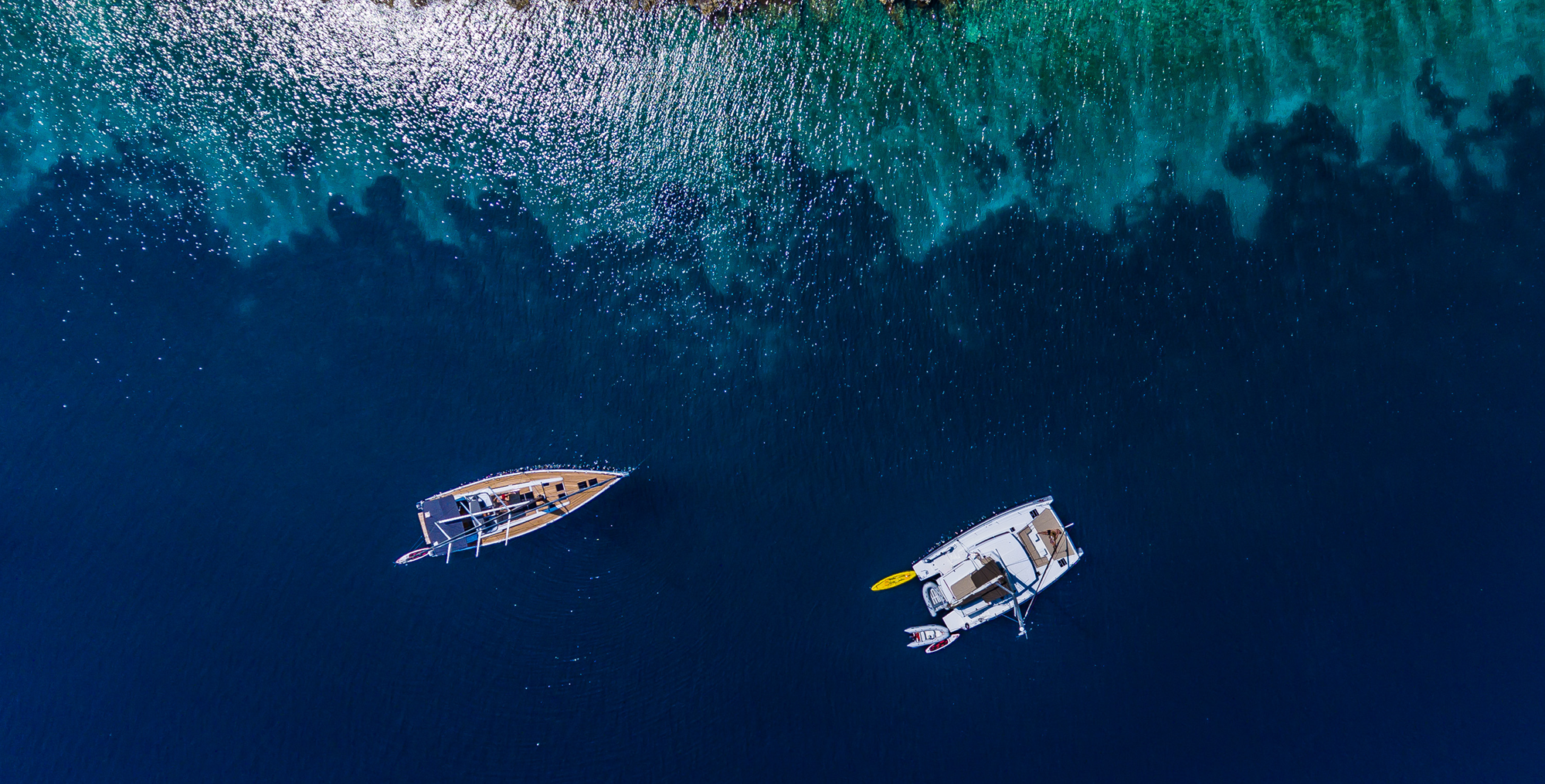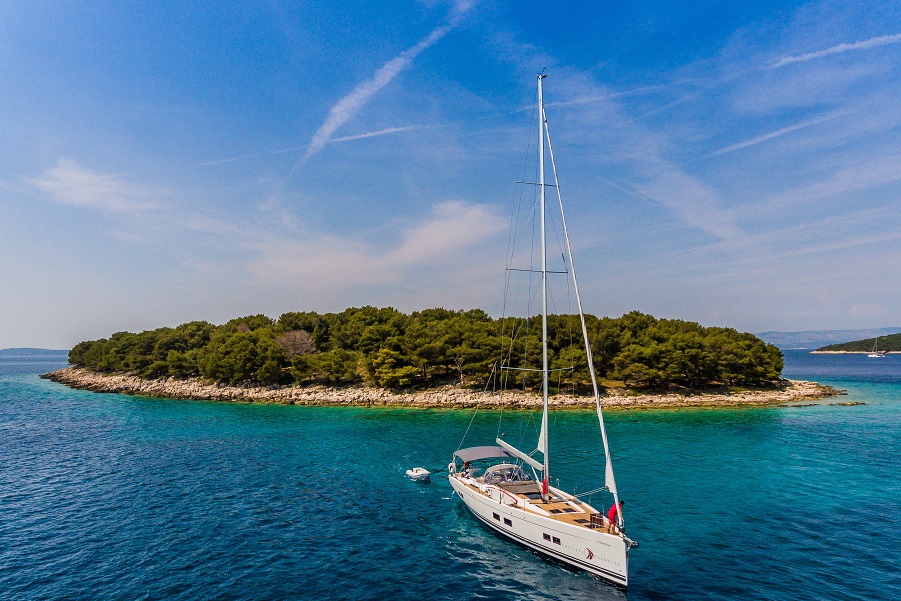Adriatic Tides: A Guide to Safe Sailing

Whether you are an experienced sailor with thousands of nautical miles under your belt, a weekend explorer enjoying the calm Dalmatian channels, or simply a sea lover dreaming of island-hopping adventures – understanding how the sea "breathes" is essential. Even though the Adriatic Sea is known for being relatively mild without the extreme tides of the Atlantic, it still follows powerful natural rhythms dictated by the Moon, the Sun, and gravitational forces.
This complete guide explains everything you need to know about Adriatic tides – from basic tidal science to local specifics and practical tips for sailing safely and efficiently. Tides may not be dramatic in this region, but their impact on sailing, anchoring, and navigation is significant.

What Are Tides?
Tides are regular rises and falls in sea level caused by the gravitational pull of the Moon and the Sun, along with Earth’s rotation. Typically, there are two high tides and two low tides each day, with a full cycle lasting approximately 12 hours and 25 minutes.
In the Adriatic Sea, a semi-enclosed body of water, tidal amplitudes are smaller than in open oceans. The most noticeable tides occur in the northern Adriatic (e.g., Trieste), reaching up to 90 cm, while in the southern Adriatic, tides rarely exceed 30 cm. Despite these smaller differences, tidal knowledge is vital – especially for docking and navigating in shallow waters.

The Science Behind Tides
Moon, Sun, and Gravity
The Moon’s gravitational pull is the primary cause of tides. High tide occurs on the side of Earth facing the Moon – and also on the opposite side due to centrifugal force. The Sun further influences tides. During new or full moons, spring tides occur with higher amplitudes. During quarter moons, neap tides occur, with smaller tidal differences.
Adriatic Sea Specifics
Tides in the Adriatic Sea have a mixed character. In some areas, there are semi-diurnal tides (two highs and two lows daily), while others experience diurnal tides (one high and one low). The rugged coastline and numerous islands create local variations, making accurate local tide forecasts essential.
While tides in the Adriatic are not dramatic, they are meaningful. In narrow bays, shallow ports, or rocky inlets, even a 20–50 cm difference in sea level can determine whether entry is safe. Winds like bura and jugo can also raise or lower water levels beyond tidal predictions.

Practical Importance for Sailors
1. Depth and Entry Safety
A 30–60 cm difference between high and low tide can affect safe passage into marinas or shallow bays. Knowing when high tide occurs allows boats with deeper drafts to dock or pass safely. During low tide, you risk grounding or struggling with reduced depth.
2. Currents and Route Planning
Tidal currents can reach over 1 knot in narrow straits or channel entrances, enough to impact navigation. Plan your route and timing to use the current to your advantage and reduce fuel consumption.
3. Anchoring and Mooring
Anchoring at high tide without accounting for the drop can leave your anchor ineffective or cause your boat to run aground. Always check the tidal range and plan your anchor chain length accordingly.
4. Maneuvering and Docking
In tight marinas or ports, tidal currents can significantly affect docking. Always approach against the current for better control.
How to Predict Tides
Use tide tables, nautical apps, and marina websites to stay informed. Key terms to monitor:
-
Time of high and low tide
-
Tidal amplitude (height difference)
-
Current direction and strength
-
Weather influence (wind and air pressure)
Apps and digital charts provide real-time predictions. However, always consider local weather, especially strong bura or jugo winds, which may alter sea levels unexpectedly.

Using Tides to Your Advantage
Ports and Anchorages
Plan arrivals at shallow anchorages like those near Vis, Brač, or Velebit Channel during high tide for safe access.
Narrow Channels
In passages such as Pašman-Ugljan or entrances to Kornati National Park, using tidal currents can reduce travel time and fuel. Avoid motoring against the current if unnecessary.
Regattas and Racing Strategy
Competitive sailors use tidal information to select optimal sides of a racecourse. A small current advantage can mean a significant lead.
Smart Tidal Sailing: Quick Tips
-
Know your location – Ask locals, marinas, and fishermen for advice.
-
Use apps and tide charts – Stay updated on changes.
-
Watch natural signs – Exposed rocks, fast-flowing water, or floating debris may indicate tidal shifts.
-
Anchor with care – Leave enough chain and distance from shore.
-
Dock against the current – For greater control in marinas.
Tides – Every Skipper’s Ally
Though not extreme, Adriatic tides are crucial for safe and efficient sailing. Understanding this natural rhythm helps you plan routes, avoid dangers, and connect more deeply with the sea. Let the tide chart become part of your daily sailing routine.
It’s not just about depth and currents – it’s about respecting the pulse of the Adriatic. Safe tides and smooth sailing!
















